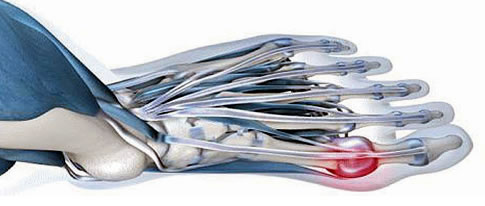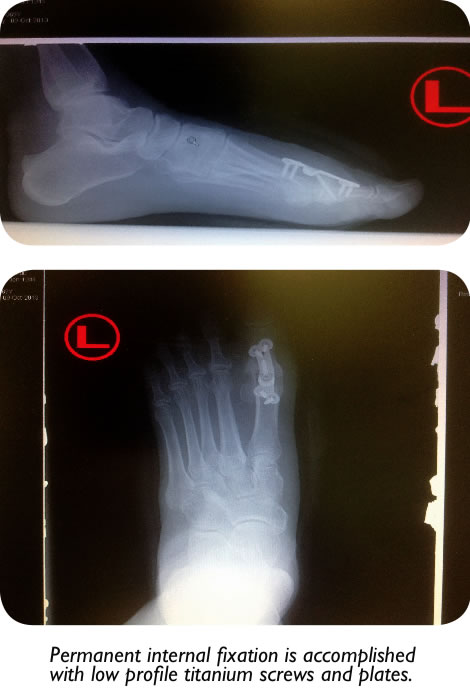|
Hallux Limitus: Great Toe ArthritisDavid Hesse, DPM Hallux Limitus (also known as hallux rigidus) is the medical term used to describe an arthritic and painful condition of the big toe. This condition develops at the large joint at the base of the toe (the bunion joint). In addition to pain, a very limited range of motion is often seen. The large joint behind the toe, the metatarsophalangeal joint, should have a total range of motion of 50 to 90 degrees. In hallux limitus/rigidus it can reduce to 0 to 30 degrees. When this happens many patients will find pain in the joint, balance issues and detrimental effects on other joints of the foot. It can also lead to long term or permanent cartilage damage.
Where Does It Come From?Causes of hallux limitus include genetics, trauma, pre-existing arthritis, faulty foot biomechanics, and overuse. Individuals who engage in daily activities or recreational activities that require excessive propulsion and upward motion (dorsiflexion) of the big toe often develop this condition. Examples include squatting, pushing large items, uphill running, and sports such as tennis and basketball. How Do I Know if I Have It?Symptoms include pain and swelling around the big toe joint as well as limited motion. In some cases the swelling is quite firm as the joint will develop significant amounts of bony spurring that can be felt just under the skin’s surface, particularly on top. In addition, you may notice clicking and grinding when the toe moves. Pain in the joint is the primary and almost universal symptom that ultimately brings patients into their doctor’s office. How Do I Treat It? Surgical treatment is commonly used and is quite successful. It may involve something as simple as cleaning out the spurs and damaged cartilage or something more involved such as joint fusion. The ultimate goal is pain reduction and improved function. These procedures are done as an outpatient at your local hospital or surgery center and can be done under light sedation. Regardless of what treatment option ultimately works best for you, the key is getting in to see your foot specialist to catch this condition in its early stages to ensure the best possible long term outcome.
Dr. Hesse – Hesse Foot & Ankle Clinic |




 Non-surgical options involve two categories: Anti-inflammatories and anything that can reduce the motion in the toe. Anti-inflammatory efforts include ice, topical arthritis/pain creams, pills such as aspirin and ibuprofen, or injectable corticosteroids into the joint itself. Reduction of toe motion can be accomplished with comfortable shoes with good arch support and a stiff sole. Rocker bottom shoes are commonly used to accomplish all of these requirements. Custom made orthotic arch supports have routinely been used to help reduce motion as well.
Non-surgical options involve two categories: Anti-inflammatories and anything that can reduce the motion in the toe. Anti-inflammatory efforts include ice, topical arthritis/pain creams, pills such as aspirin and ibuprofen, or injectable corticosteroids into the joint itself. Reduction of toe motion can be accomplished with comfortable shoes with good arch support and a stiff sole. Rocker bottom shoes are commonly used to accomplish all of these requirements. Custom made orthotic arch supports have routinely been used to help reduce motion as well.